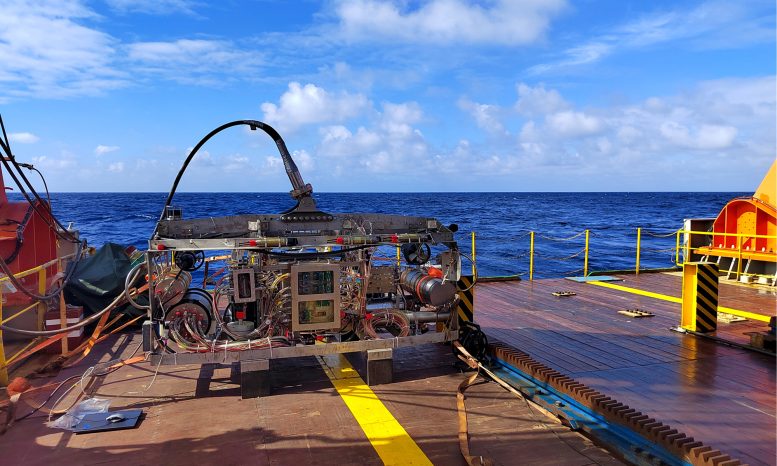
A research group headed by Professor Chen Chilai from the Hefei Institutes of Physical Science of the Chinese Academy of Sciences has significantly enhanced the detection sensitivity of dissolved methane in water. Achieving an improvement of more than 500 times, this advancement allows for baseline methane detection in oceans and lakes.
The research was published in Talanta.
Monitoring ocean methane emissions is vital for understanding climate change and exploring clean energy sources like natural gas hydrates. However, existing data on dissolved methane in the ocean remain limited, leading to significant uncertainties in estimating oceanic methane flux due to sensitivity limitations. While deep-sea mass spectrometry serves as a crucial tool for rapid detection of dissolved gases in the ocean, its limited sensitivity restricts its application to specific regions or anomalous events.
Technological Breakthrough in Detection
In this research, the team developed a small-volume, low-power online water removal system to address challenges such as high gas content in samples and limited space in detection instruments. By optimizing the gas sampling route design and integrating it into the Intelligent Microsystem Laboratory’s Underwater Mass Spectrometry (ims-UMS), they achieved a significant improvement in detection sensitivity. The methane detection limit plummeted from above 16 nmo/L to a remarkable 0.03 nmol/L, exceeding a 500-fold enhancement.
The team’s dedication to deep-sea mass spectrometry, Micro-electromechanical systems technology, and intelligent microsystem technology played crucial role in this breakthrough.
This research lays an important technological foundation for further methane flux calculations, global climate research, plume tracking, and cold seep discovery, according to the team.
Reference: “Online water vapor removal membrane inlet mass spectrometer for high-sensitivity detection of dissolved methane” by Han Wang, Changjie Liu, Haiyun Song, Haobin Wang, Yupeng Cheng, Youjiang Liu and Chilai Chen, 11 March 2024, Talanta.
DOI: 10.1016/j.talanta.2024.125907